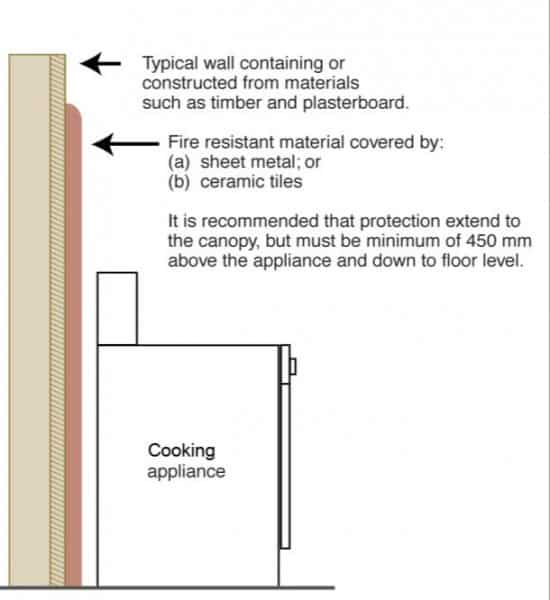Glass and gas: a potentially deadly combination
While a glass splashback can give a great aesthetic finish to a modern kitchen design, it also comes with safety concerns and government authorities are stepping in.
The Victorian Building Authority (VBA) is cracking down on unsafe gas cooker installations. The government agency says it’s an area plumbers and builders often overlook.
A report released by the VBA says the agency has recently seen a growing number of domestic gas cooking appliances installed in residential premises without adequate clearance from surrounding combustible surfaces.
A common example of this is gas cook top rear burners being installed in close proximity to combustible glass walls.
The two main rules to follow in such installations are to leave clearances of at least 200mm between the periphery of the burner and a vertical combustible surface and to not carry out an installation where an adjacent combustible surface can exceed 65°C.

However, as with many things Standards related, it is a little more complicated than simply following those two rules.
AS/NZA 5601.1:2013 Gas Installations Part 1: General Installations does include clauses which can allow the distance between the gas burner and the combustible surface to be less than 200mm.
Actions can be undertaken such as installing a toughened safety glass to make such installations possible. If employed, the installer also needs to consider the requirements of AS/NZS 2208 Safety Glazing Materials in Buildings.
The VBA says installations with safety glass need to be verified as complying with the above Standard by the product being marked accordingly or through verification documentation from the manufacturer.
The government agency warns that installations of this nature may be audited so anyone installing such systems needs to obtain and file the relevant documentation.
To simplify and outline all the relevant information in this area the VBA has released a Technical Solution Sheet titled: ‘Commercial Catering Equipment, Residential Cooking Appliances – Non-combustible Walls, Stainless Steel or Glass Feature Walls and Gas Safety Shut off Valves.’
The document states a common mistake is made where commercial cooking equipment is installed directly against a wall. Although the primary surface of the wall may be non-combustible such as tiling or stainless steel, fires have started due to heat passing through the primary surface over time and igniting the framing material.
The report stresses that tiling or stainless steel does not necessarily provide adequate heat protection. When a wall has already been constructed, it may be necessary to refer to detailed structural drawings to determine the framing and other backing materials used. Fire resistant materials complying with the requirements of AS/NZS 5601.1. can provide an adequate solution.
When catering equipment is installed, the report suggests to always leave an air-gap for cooling purposes unless instructions indicate otherwise. Installers should ensure airflow is not obstructed and should never reduce the spatial clearances specified by the manufacturer.
The report also reminds installers to take note of health regulations operating in the industry; ‘Always check that the installation of commercial catering equipment will comply with local health authority regulations and their requirements.’
The following extract from the report refers to gas burner installations in a residential setting.
Special care needs to be taken when stainless steel or toughened glass is to be used as a wall covering near a gas cooking appliance.
Provided the clearance from the nearest burner to the stainless steel or glass wall is 200mm or greater the installation will be deemed acceptable.
Where the clearance is less than 200mm, then:
1. For stainless steel:
i. the wall must not contain combustible materials; or
ii. the surface of the wall is to be protected as per AS/NZS 5601.1., Clause 6.10.1.2 & Table C1 in Appendix C.
2. For toughened glass:
i. if the glass is to be fixed to a combustible surface, that surface is to be protected as per AS/NZS 5601.1., Clause 6.10.1.2 & Table C1 in Appendix C.
AS/NZS 5601.1 also states: “a gas appliance shall be installed such that the surface temperature of any nearby combustible surface will not exceed 65°C over ambient.”
So next time you are installing a glass splashback or a gas burner, ask yourself the question: does this comply with Australian Standards?
